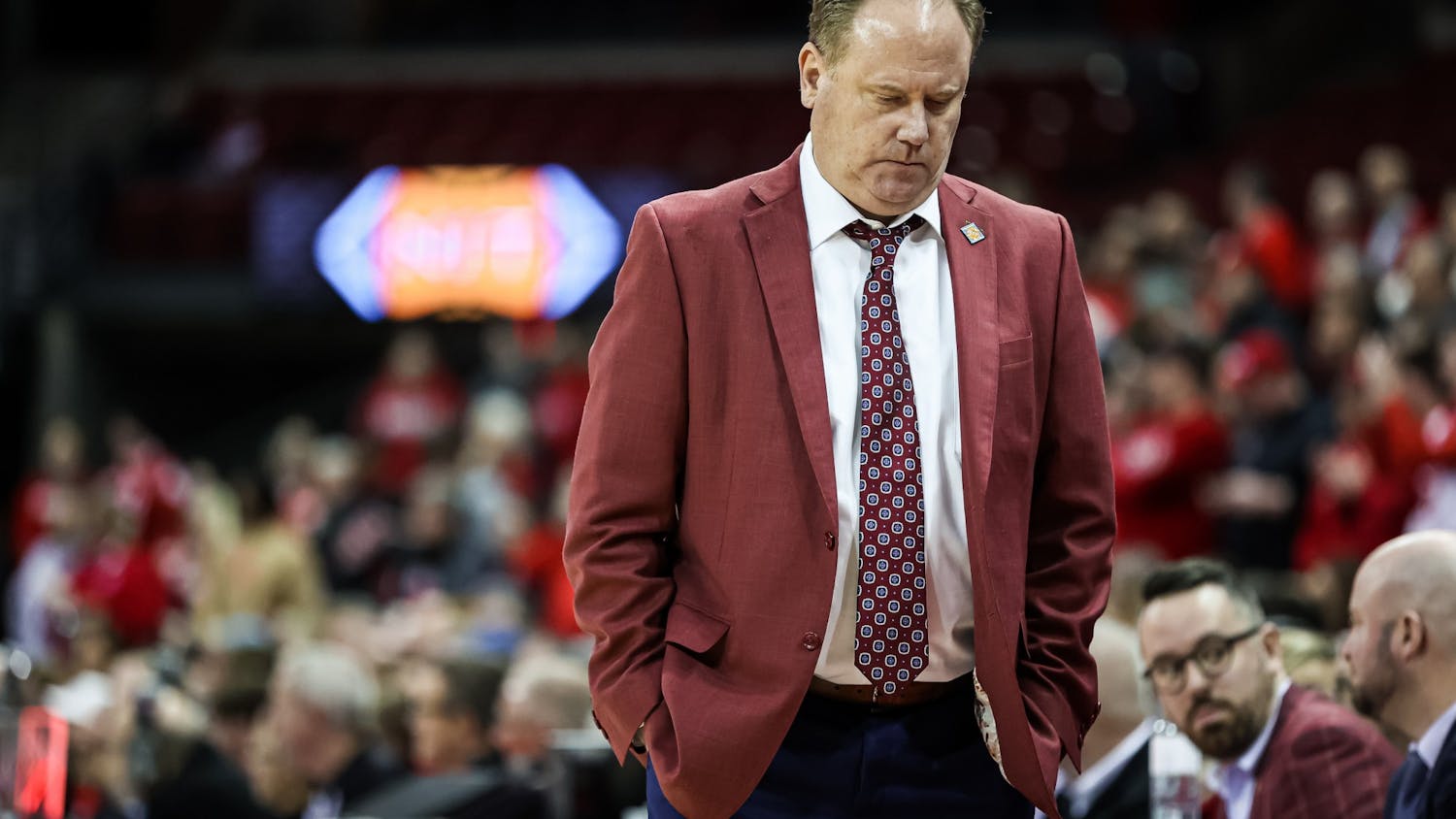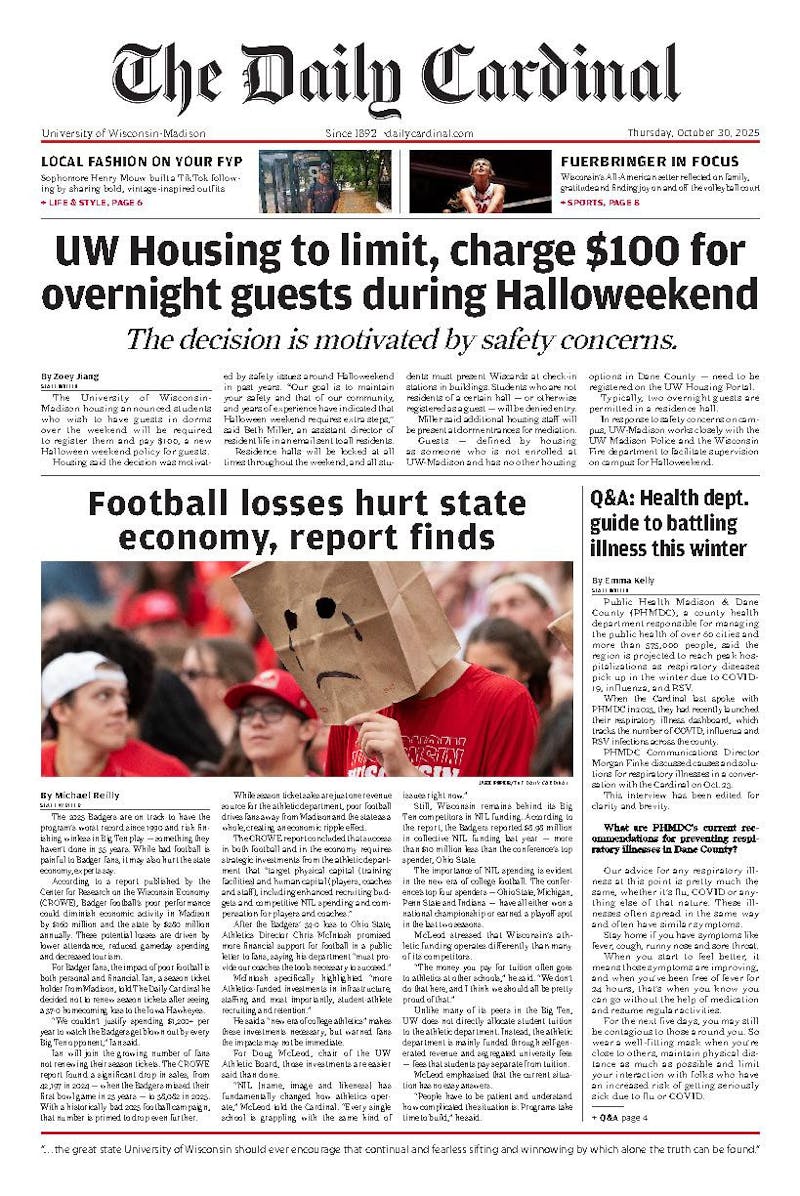This year’s women’s NCAA swimming and diving championships start Wednesday in Atlanta. This is usually the biggest event of the year for collegiate swimmers, but this year it is overshadowed a bit by June’s Olympic Trials. The No. 12 ranked Wisconsin women have qualified in 17 swims, including four relays, and are poised for a strong finish.
Many Badger fans may be a little confused as to how NCAAs work for swimming, so here’s a bit of a primer: Swimmers qualify themselves at various meets throughout the season based on a two-tiered time standard set by USA Swimming and the NCAA. Based on numbers and how many individuals and relays auto-qualified in the first tier, a selection committee will then decide how many swimmers and relays in the second tier will qualify and get to swim at NCAAs. Once they get there, swimmers score points if they place in the top 16 of their particular event.
This year, there are 13 individual events being swum by the UW women. Seeing as many of the discrepancies between qualifying and top times are extremely close, it’s really anyone’s ball game if they’re having a really good day in some of the shorter races.
The Badgers have also qualified in four relays—the 200 and 400 freestyle relays, as well as the 200 and 400 medley relays.
Now you’re pretty primed as to how NCAAs work, here are a few frequently asked questions about watching swimming:
Will this meet qualify swimmers for the Olympic Trials?
No. This meet is held in a short course (yards) pool, which is completely different than a long course (meters) pool, which is the type of pool that needs to be swum in to qualify for Trials. Swimmers can, however, break American (or other national) records, as well as world records, at this meet. The defending champion in the 100 butterfly, Kelsi Worrell of Louisville, is also the short course world record holder; she set that record at this same meet last year.
How do relays work?
In the freestyle relays, every swimmer does the front crawl—in the case of the 200 relay, there are four swimmers doing 50 yards, and in the 400 relay there are four swimmers doing 100 yards. The distances are the same in the medley relays, but the format is a bit different; each swimmer will swim their leg of the relay in a different stroke. The first swimmer will do butterfly, the second backstroke, the third breaststroke and the fourth freestyle (which usually means front crawl).
I see a swimmer that’s seeded four seconds below the top seed in a shorter race, like the 100 breaststroke. Does she have a possibility to win NCAAs?
Usually, in a shorter race, the time discrepancies are a lot closer than four seconds, and it’s extremely rare for a swimmer (especially in a 100-yard type race) to drop that much time from one meet to the next, unless there are extenuating circumstances like recovering from an illness or injury. Many times when swimmers do drop time in shorter races, it’s tenths or even hundredths of a second. For the 100 breaststroke, a more reasonable amount of time to drop would be between three-tenths of a second to one second.
What about a four-second discrepancy in a longer race like the 400 IM or the mile?
That’s more plausible. The men’s team had a swimmer in the mile this year drop about 11 seconds off his time from one meet to the next, and based on the amount of rest many of these swimmers have had, it’s very possible to drop that much time or even more in a distance event.
How do the officials know who won in a short race that’s determined in hundredths of a second, like the 50 freestyle?
All NCAA competition pools are equipped with an electronic timing system that will verify the time it took from when the swimmer entered the water to when he or she reached the wall, as well as people with stopwatches outside the pool. In order to finish a race, the swimmer must touch the wall so the time is verified.
I’m looking at the score sheet and I see “DFS” and “NS” under certain swimmers’ results. What do those mean?
Similar to track, these mean “disqualified - false start” and “no show." They mean the race will not count in the final standings for that swimmer.
There are a lot of “100” and “200” races. What are the differences between them?
Each one of those races is a different stroke, and in the case of the 200 IM, a combination of all four strokes. Each stroke has a different set of rules as to what you can and cannot do, and each individual swimmer has their strengths and weaknesses in terms of what strokes they are good at. Someone can be horrible at breaststroke and great at backstroke and butterfly, so that is what they’ll swim. If a swimmer is really versatile, they can be entered in an IM, or individual medley, event that showcases all four strokes.
What’s with the knee-length swimsuits?
Those would be tech suits. They’re notoriously hard to get on, extremely tight, and outrageously expensive. A tech suit is made with a special combination of fabrics that is compressive and repels water to some degree. The tighter the suit, the less drag it creates, so in theory, the tech suit will make you go faster in the water.
Who are the Badgers’ individual qualifiers and seeds?
Chase Kinney - 50 (15th), 100 (19th), 200 (66th) freestyle
Maria Carlson - 100 (38th) and 200 (40th) breaststroke
Danielle Valley - 500 (18th) and 1650 (13th) freestyle, 400 IM (43rd)
Dana Grindall - 100 (32nd) and 200 (33rd) butterfly
Jenny Holtzen - 500 (68th) and 1650 (34th) freestyle, 400 IM (53rd)
Be sure to keep up with how the Badgers are doing in the meet via Twitter. We will be live tweeting Wisconsin’s results as they come in starting Thursday morning, when the first event with a Wisconsin qualifier takes place.






